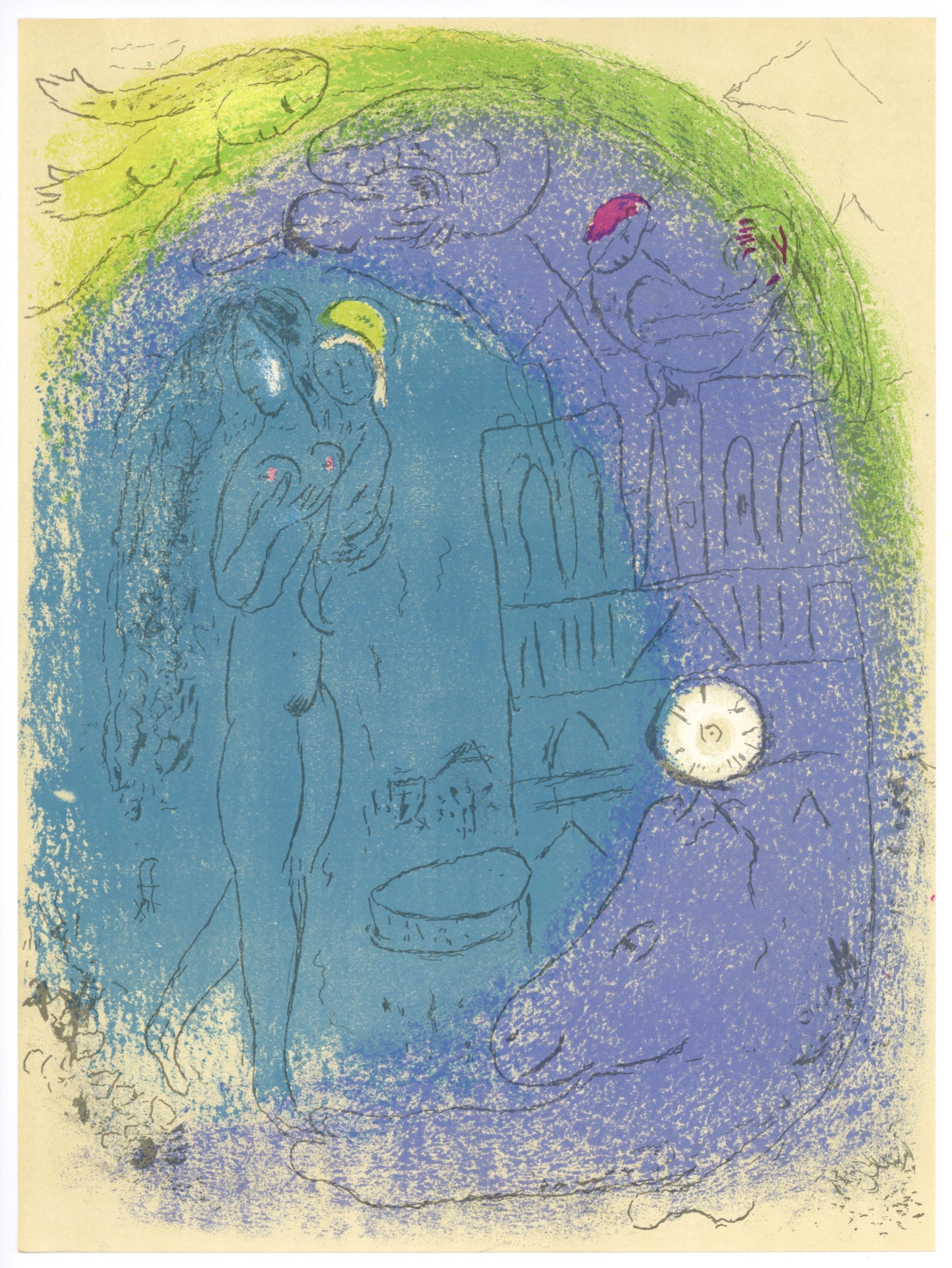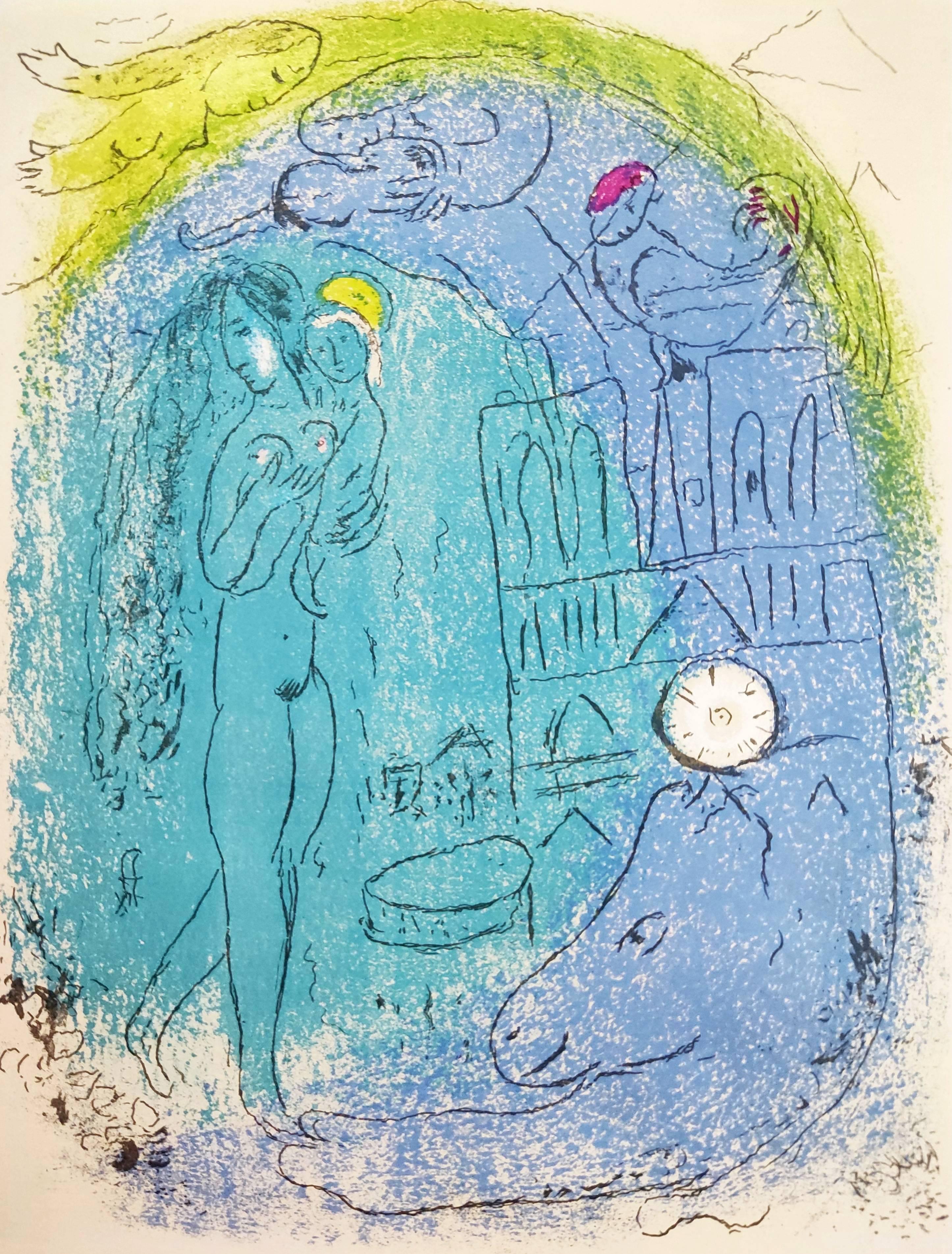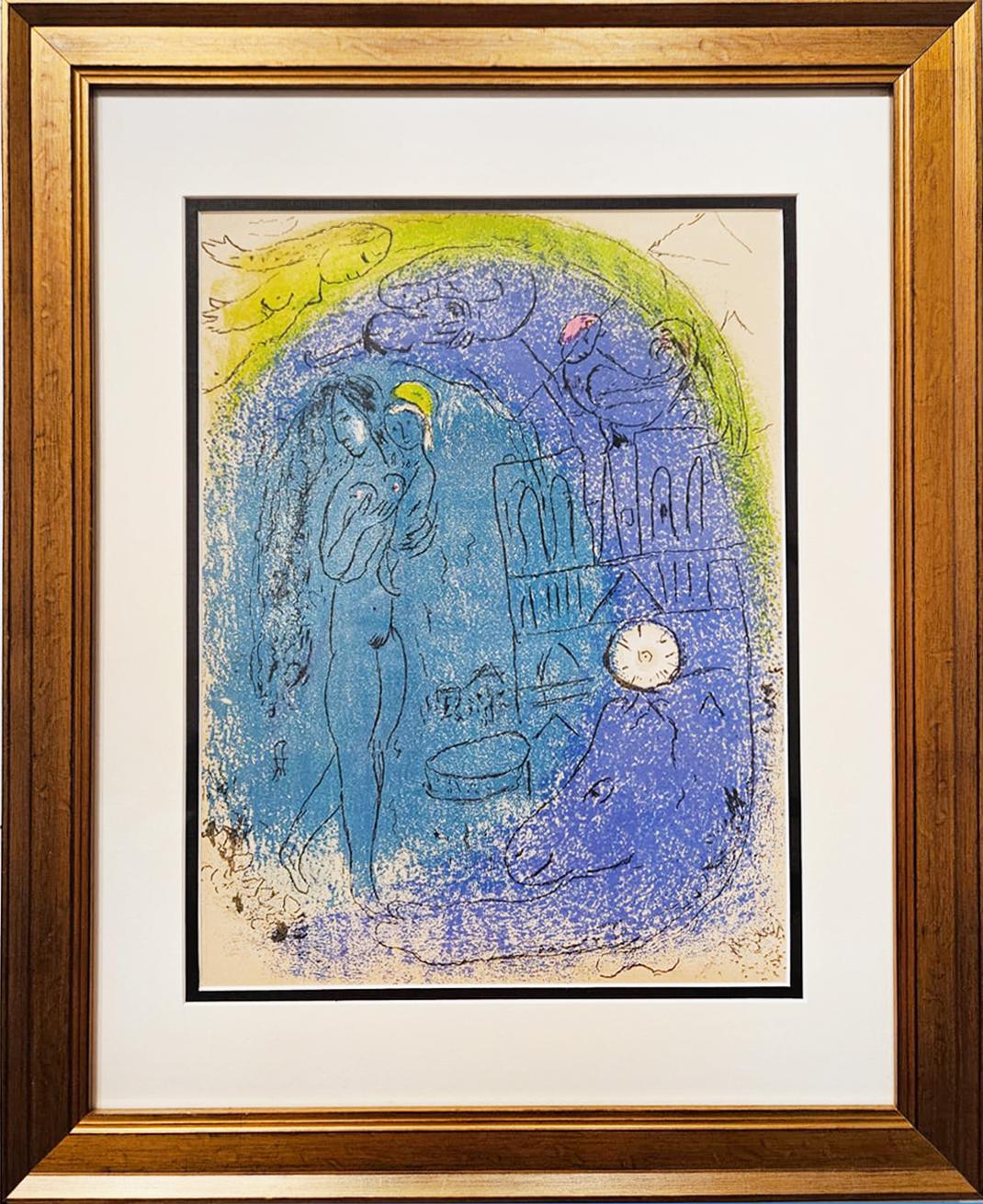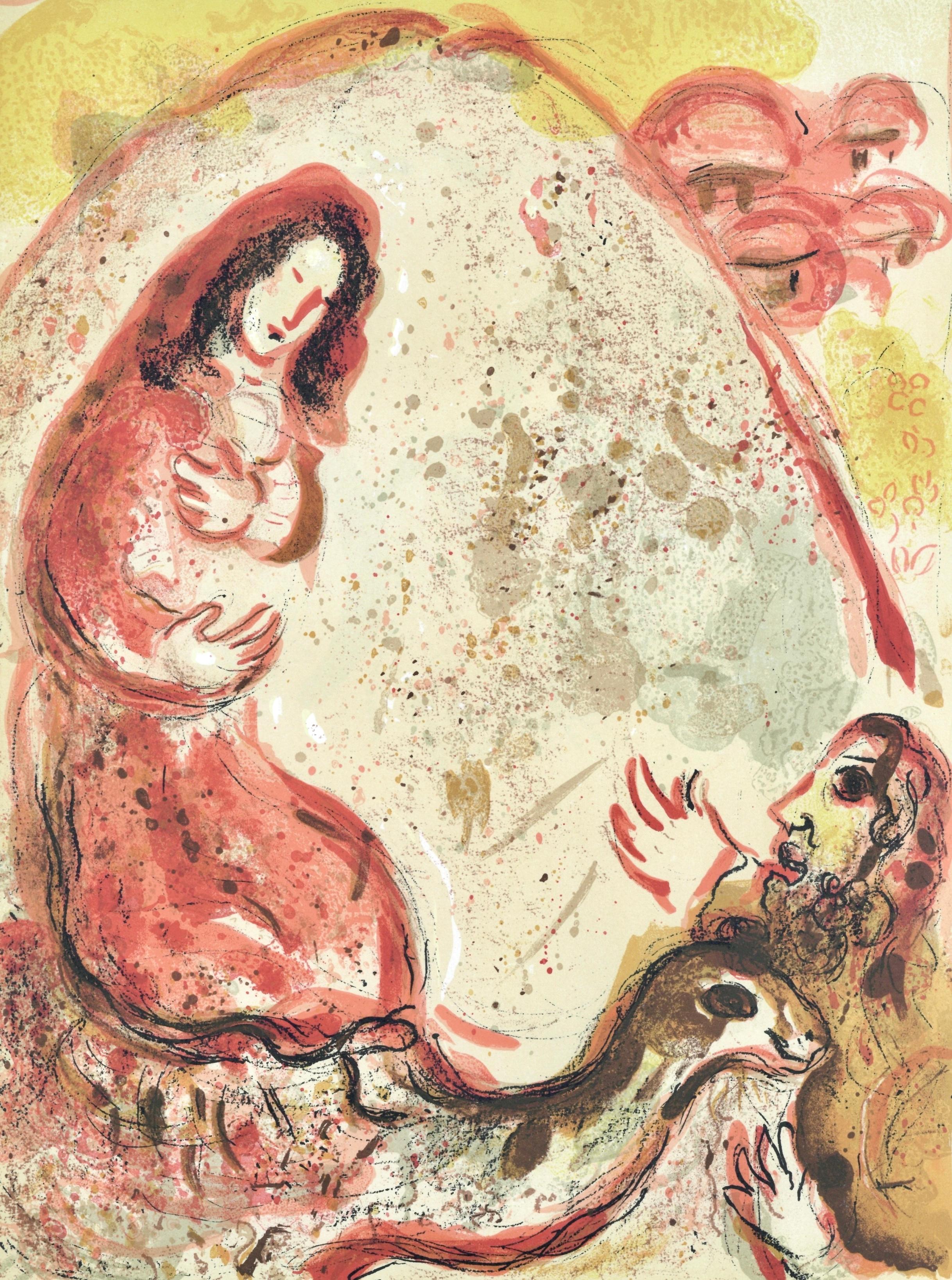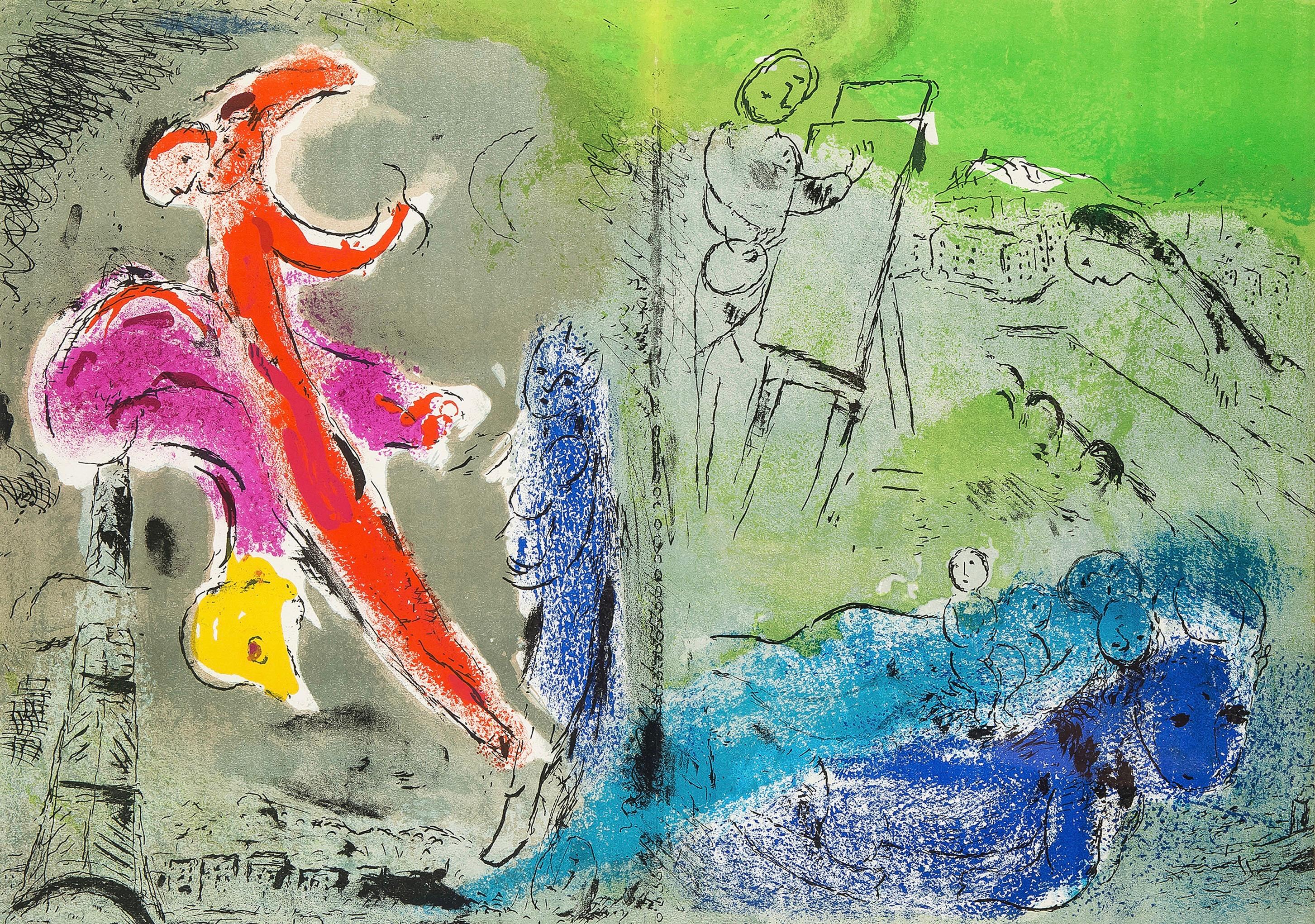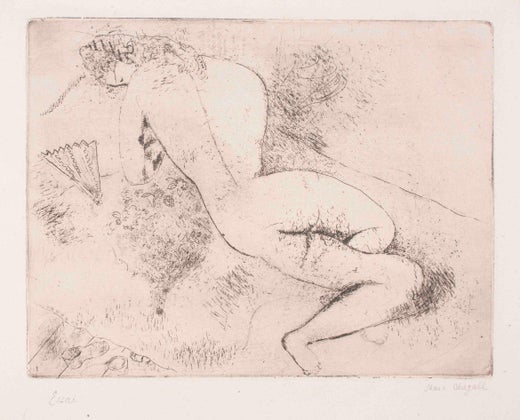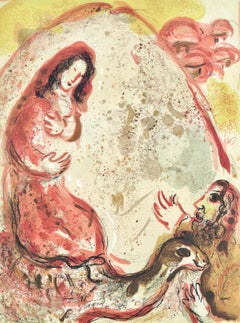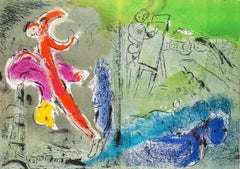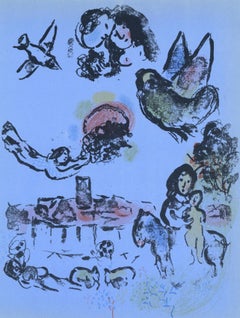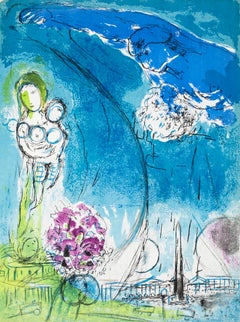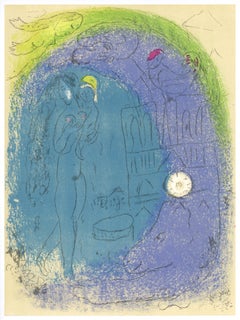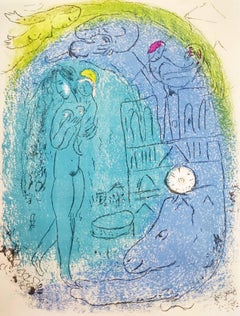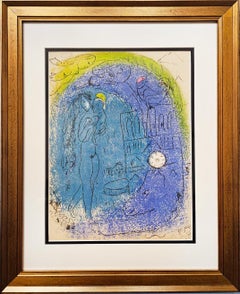Lithograph on vélin des Papeteries du Marais paper. Paper Size: 14 x 10.25 inches. Inscription: Unsigned and unnumbered, as issued. Catalogue raisonné references: Cain, Julien, and Fernand Mourlot. Chagall Lithographe. André Sauret, Éditeur, 1960, illustration 82. Cramer, Patrick, and Meret Meyer. Marc Chagall: Catalogue Raisonné Des Livres Illustrés. P. Cramer ed., 1995, illustration 23. Notes: From the album, Verve: Revue Artistique et Littéraire, Vol. VII, N° 27-28, 1953. Published by Éditions de la revue Verve, Paris, under the direction of Tériade, éditeur, Paris; printed by Mourlot Frères, Paris, January 15, 1953, in an edition of MM. Excerpted from the album (translated from French), This double issue of Verve was completed to print on January 15, 1953 by Draeger for typography and gravure and by Mourlot for lithography. Additional notes: Excerpted from Poppy Sfakianaki, ‘La revue Verve (1937–60): Un tremplin pour la carrière de Tériade dans les éditions d’art’, Journal of European Periodical Studies, 4.2 (Winter 2019), 70–89, In 1937, Tériade (1897-1983) met David Smart (1892-1952), the American publisher of Esquire magazine, who offered him to the opportunity to collaborate on the creation of 'the most beautiful magazine in the world'. Smart recognized in Tériade not only his ability as a publisher and knowledge of art history, but also his professional network and the name he made for himself in the Parisian art world—all crucial advantages for an editorial business. Having had the commercial conviction that beauty "sells", Smart intended to address the American public, attracted to French art, including Modern art, and the myth of artistic life in Paris. For his part, Tériade saw the proposed collaboration as an opportunity for a foray into the American market—a powerful ally of modern art in France. Éditions de la Revue Verve was founded in November 1937, largely funded by Smart, and directed by Tériade. Verve: Revue Artistique et Littéraire was a luxurious and ambitious art publication, published not only in French, but also in English in its early years, and distributed in Europe and the United States. Its configuration was reminiscent of that of the French art journals Cahiers d'art, Minotaure, and Arts et métiers graphiques, as well as that of the American art magazine, Coronet. However, Verve was superior to the competition because of its copious iconography and high printing quality. Its price varied between 60 and 150 francs (for double numbers) before the war, and between 120 and 350 francs during the war. Given its high price, the magazine mainly targeted art dealers, collectors, bibliophiles and wealthy art lovers. The exquisite aesthetics of the magazine was due to its editor-in-chief, Tériade, who sought to develop a platform for dialogue between image and text, visual arts and literature. The dominant factor of each issue remains its iconography, composed of reproductions of works by modern artists that Tériade admired, and 'masters', mainly of the French tradition, alongside photos and miniatures of medieval manuscripts. Tériade undoubtedly realized with his magazine an idea expressed in 1934 according to which books served as an 'ideal museum' or an exhibition where all the artistic masterpieces are gathered, which Malraux developed later in Le Musée imaginaire (Geneva: Skira, 1947), parts of which will appeared in Verve. During Second World War the periodicity of the journal changed, then irregular, and the less varied nature of the subjects treated. Thus, the issues published during the War (as well as in 1945 and 1946) were devoted exclusively to the reproduction of medieval illuminations. Finally, the special issues of the post-war period each present the recent production of a modern art painter. Only numbers 8 (1940) and 27-28 (1952) were an exception with a more varied summary. Verve's reception was positive as evidenced by several laudatory press articles throughout its run. The success of the magazine, Tériade's passion for modern art and medieval manuscripts, his admiration for the publications of Ambroise Vollard and Albert Skira, and his knowledge of the world of bibliophiles, soon led him to amplify his editorial activity. In 1943, despite the practical difficulties imposed by the war, his first artist's book was published, written and illustrated by Georges Rouault. Until 1975, Tériade published Éditions de la Revue Verve, nine books by modern artists, such as Henri Matisse, Pablo Picasso, Marc Chagall, Joan Miró, entirely composed (text and images) by the artists; seventeen books illustrated by recognized modern artists; an album of lithographs by Fernand Léger on Paris; two photographic albums by Henri Cartier-Bresson; two monographs on the artists André Beaudin and Francisco Borès; a luxurious series of reproductions of medieval illuminations; and, a series of portfolios on great French architecture. Ultimately, the comparative study of the journal and the editions of Verve: Revue Artistique et Littéraire illustrates the importance of the tacit relational dynamic that results from the relations of collaboration and exchange of symbolic capital based on common perceptions and interests, as well as on feelings of mutual friendship and appreciation of actors in the art world who share a visual and bibliophilic culture and thus contribute to the success of the journal and the publishing house.
MARC CHAGALL (1897-1985) was a Russian-French artist. An early modernist, he was associated with the École de Paris as well as several major artistic styles and created works in a wide range of artistic formats, including painting, drawings, book illustrations, stained glass, stage sets, ceramics, tapestries and fine art prints. Chagall was born into a Jewish family near Vitebsk, today in Belarus, but at that time in the Pale of Settlement of the Russian Empire. Before World War I, he travelled between Saint Petersburg, Paris, and Berlin. During that period, he created his own mixture and style of modern art, based on his ideas of Eastern European and Jewish folklore. He spent the wartime years in his native Belarus, becoming one of the country's most distinguished artists and a member of the modernist avant-garde, founding the Vitebsk Arts College. He later worked in and near Moscow in difficult conditions during hard times in Russia following the Bolshevik Revolution, before leaving again for Paris in 1923. During World War II, he escaped occupied France to the United States, where he lived in New York City for seven years before returning to France in 1948. Art critic Robert Hughes referred to Chagall as "the quintessential Jewish artist of the twentieth century". According to art historian Michael J. Lewis, Chagall was considered to be "the last survivor of the first generation of European modernists". For decades, he "had also been respected as the world's pre-eminent Jewish artist". Using the medium of stained glass, he produced windows for the cathedrals of Reims and Metz as well as the Fraumünster in Zürich, windows for the UN and the Art Institute of Chicago and the Jerusalem Windows in Israel. He also did large-scale paintings, including part of the ceiling of the Paris Opéra. He experienced modernism's "golden age" in Paris, where "he synthesized the art forms of Cubism, Symbolism, and Fauvism, and the influence of Fauvism gave rise to Surrealism". Yet throughout these phases of his style "he remained most emphatically a Jewish artist, whose work was one long dreamy reverie of life in his native village of Vitebsk." "When Matisse dies", Pablo Picasso remarked in the 1950s, "Chagall will be the only painter left who understands what colour really is.”
